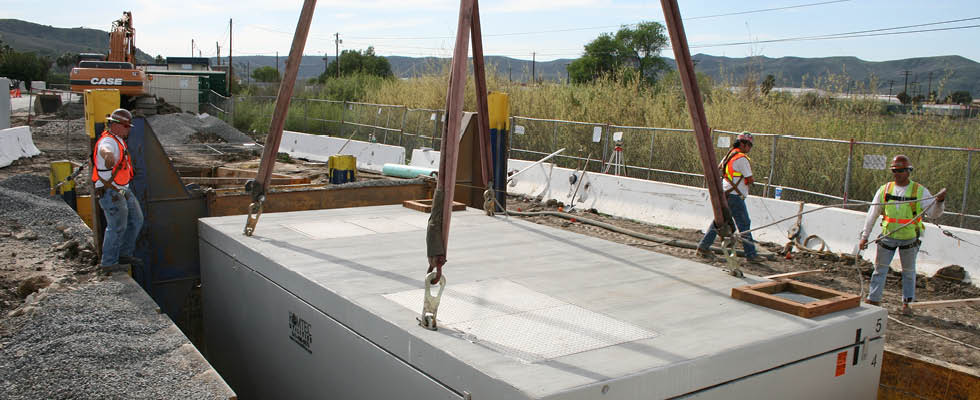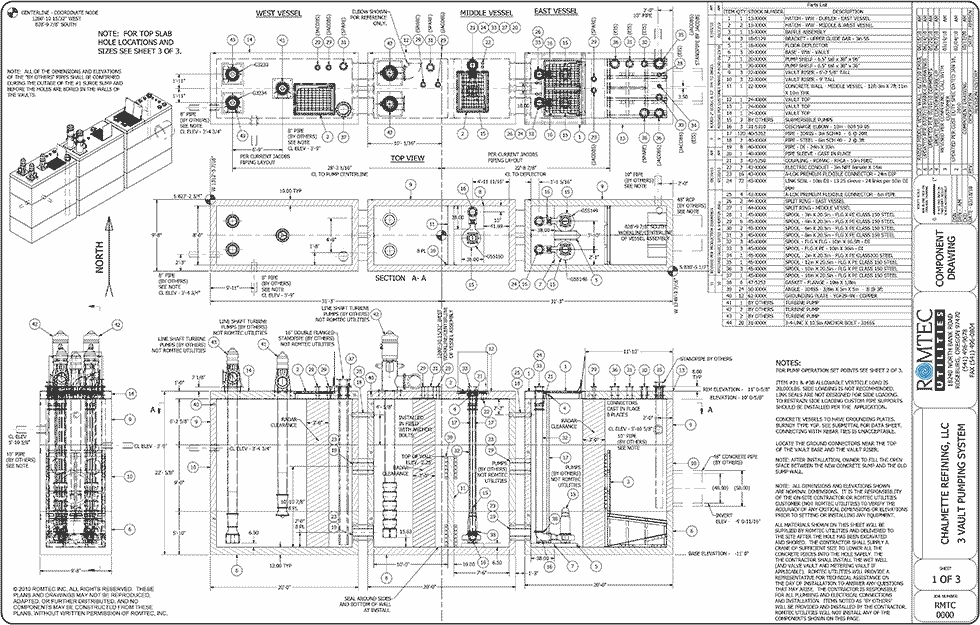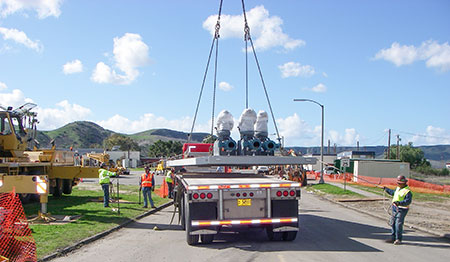
The waterborne pollution in America presented by stormwater is a problem. Stormwater refers to any water that has fallen to the ground with runoff that has gone to surrounding creeks, rivers, bays or the ocean. The volume of today’s stormwater is exacerbated by the confined development of hard surface areas, which increases the speed of the runoff and reduces the overall natural surface area available for the water to be absorbed in the soil. Stormwater comes in many different volumes but also with many different contaminants that would ideally be captured and eliminated prior to the water leaving its place of origin. To this end, most North American rules and regulations regarding stormwater have focused on its capture and treatment at the site of potential contamination.
The first step every industry faces regarding stormwater is its capture. From rooftops to hard surface runoff, conventional storm drain systems have seen significant evolution. Where in the past they may have simply conveyed the runoff, they now are able to capture all types of liquid and solid pollutants. They then subsequently treat or separate the pollutants from the stormwater at the site where the water originated.

For years, major oil and gas producers adjacent to major shipping terminals have actively worked to treat stormwater runoff with whatever treatment and methodology was available at the time. This was the case when one pumping systems designer and supplier was asked to replace the existing sump and pumping containment at a major terminal and shipping facility near Baton Rouge, Louisiana. The containment system had long gathered all surface runoff and conveyed it to multiple above-grade storage tanks. This then conveyed it to on-site treatment, where the hydrocarbons were separated from the solids before both were ultimately eliminated prior to the release of the treated water to the bay.
The challenge, in this case, was to replace the existing sheet pile sump within the given space quickly, completely and in a manner that would last for decades while pumping as much as 60,000 gallons per minute (gpm). Next, the new sump and related pumping systems needed to convey the untreated water to six large above-grade storage tanks that would automatically alternate in their ability to receive water based on each tank’s available volume.
The existing raw water storage tanks had to constantly report their level to a new control panel, which would then automatically convey the water to each of the six tanks depending on their available capacity. This requirement was part of the pumping system’s new control panel and its overall control and communication. The material for the new sump needed to be precast concrete to meet the high-speed decommissioning of the old sump and the installation of the new.
Image 1 shows that instead of one continuous, wet-poured, 8-feet wide by 54-feet long by 20-feet deep vessel, the pumping system manufacturer precast three vessels, each being 8 feet wide by 18 feet long by 20 feet deep with large interconnecting piping. They also created a three-vessel sump that was structurally three separate vaults forming a single pumping system sump that would replace and long outlast the old sheet pile sump.
Stormwater pumping systems must often be designed to handle a wide range of influent volume, and this system was no exception. The first chamber of the sump—8 feet wide by 18 feet long by 20 feet deep—was designed to handle low and/or normal volume. Its selection included two pumps that combined to handle approximately 12,000 gpm.

The second chamber does not come into play until the volume of water inflow exceeds 12,000 gpm. This second vessel is designed to handle two more pumps, bringing the overall pumping rate to approximately 24,000 gpm. It is important to recognize that progressive pumping scenarios like this must be configured to grow with the inflow in their ability to
pump a larger volume of stormwater as the event increases.
The third chamber is the location where larger vertical turbine pumps in the system will be used when the pumps in vessels 1 and 2 are unable to keep up with the inflow.
This sort of progressive pumping scheme is used in many different types of pumping requirements. In many designs, all pumps continue to operate while more and more are turned on. The design and prefabrication of systems of this size and scope are not for the inexperienced. It takes years and hundreds of pumping systems before any engineer or engineering team has the experience and knowledge to deal with all the structural, mechanical, electrical and control and communication requirements involved in a stormwater pumping system of this scope.
There is a final aspect of the precast concrete structures that form the sump of this major stormwater pumping system. The precast concrete intake structure, as is the case in most major stormwater on-site collection and treatment projects, has a great many solids that must be captured and dealt with prior to the actual pumping of liquid and smaller manageable and treatable solids. Intake structures, which in this case are built into the first section of the overall sump, are an often overlooked and misunderstood aspect of high-flow projects and many medium- and low-flow projects, too. Simply put, prior to pumping and treating the remaining stormwater elsewhere, as many of the major solids as possible need to be captured first. Capturing as many solids as possible prior to pumping is the first step of stormwater treatment.

Stormwater in oil and gas applications may contain more hydrocarbons than other stormwater scenarios. However, in many ways, this is as simple as collecting as many of the solids as possible prior to pumping. Oil and water separators have been around forever, and they are sized to essentially skim the oil from the surface of the water, eliminating it prior to runoff. Oil and water separators often collect the oil in a separate vessel after the separation of the oil from the water.
If it is beginning to sound like stormwater treatment is first simply separating the unwanted pollutants from the water, that is, in fact, exactly what most stormwater treatment involves. There are exceptions for things like heavy metals and other chemical compounds, but most of the water treatment occurs via separation before, during or after the water collection and conveyance. The aforementioned system involves an approach that begins with heavy/major solids before moving to finer separation. This process of greater
to finer separation of oil and water, as well as other typical stormwater pollutants such as dirt, debris and grit, is completed prior to on-site sampling and testing, which confirms if the water has been cleaned and treated and can be released back into, in this case, the bay.
The stormwater collection conveyance and treatment on this site is a major project involving a peak pumping rate of approximately 60,000 gpm. The surface and sub-surface water all comes to the new three-chambered sump and is then pumped to six on-site, above-grade tanks that then send it on to further solids and oil and water separation and testing before it is ultimately released. The oil and gas industry has been a leader in the application and updating of all major and minor methods of on-site stormwater treatment.
This system’s requirements began with collection and conveyance. This phase is where most of the contaminants will be separated, treated and eliminated. As the water moves on, finer physical treatment and separation will result in water quality in North America that is improving every day. Major industries, like oil and gas, have led the application of the technologies that are treating more and more of the world’s stormwater.


